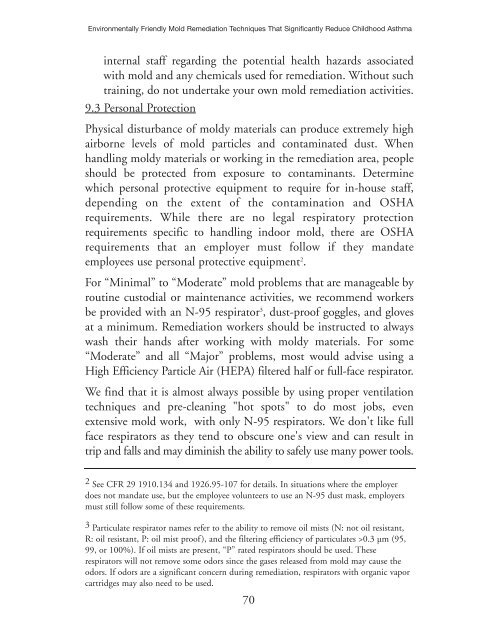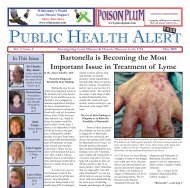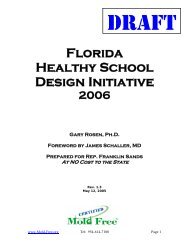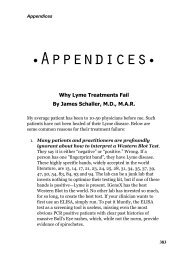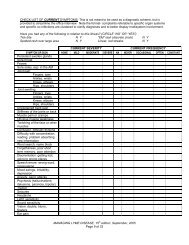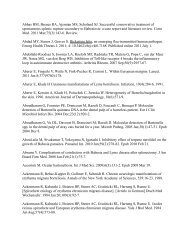Download Here - James L. Schaller, M.D., M.A.R., P.C
Download Here - James L. Schaller, M.D., M.A.R., P.C
Download Here - James L. Schaller, M.D., M.A.R., P.C
Create successful ePaper yourself
Turn your PDF publications into a flip-book with our unique Google optimized e-Paper software.
Environmentally Friendly Mold Remediation Techniques That Significantly Reduce Childhood Asthmainternal staff regarding the potential health hazards associatedwith mold and any chemicals used for remediation. Without suchtraining, do not undertake your own mold remediation activities.9.3 Personal ProtectionPhysical disturbance of moldy materials can produce extremely highairborne levels of mold particles and contaminated dust. Whenhandling moldy materials or working in the remediation area, peopleshould be protected from exposure to contaminants. Determinewhich personal protective equipment to require for in-house staff,depending on the extent of the contamination and OSHArequirements. While there are no legal respiratory protectionrequirements specific to handling indoor mold, there are OSHArequirements that an employer must follow if they mandateemployees use personal protective equipment 2 .For “Minimal” to “Moderate” mold problems that are manageable byroutine custodial or maintenance activities, we recommend workersbe provided with an N-95 respirator 3 , dust-proof goggles, and glovesat a minimum. Remediation workers should be instructed to alwayswash their hands after working with moldy materials. For some“Moderate” and all “Major” problems, most would advise using aHigh Efficiency Particle Air (HEPA) filtered half or full-face respirator.We find that it is almost always possible by using proper ventilationtechniques and pre-cleaning "hot spots" to do most jobs, evenextensive mold work, with only N-95 respirators. We don't like fullface respirators as they tend to obscure one's view and can result intrip and falls and may diminish the ability to safely use many power tools.2 See CFR 29 1910.134 and 1926.95-107 for details. In situations where the employerdoes not mandate use, but the employee volunteers to use an N-95 dust mask, employersmust still follow some of these requirements.3 Particulate respirator names refer to the ability to remove oil mists (N: not oil resistant,R: oil resistant, P: oil mist proof), and the filtering efficiency of particulates >0.3 μm (95,99, or 100%). If oil mists are present, “P” rated respirators should be used. Theserespirators will not remove some odors since the gases released from mold may cause theodors. If odors are a significant concern during remediation, respirators with organic vaporcartridges may also need to be used.70


